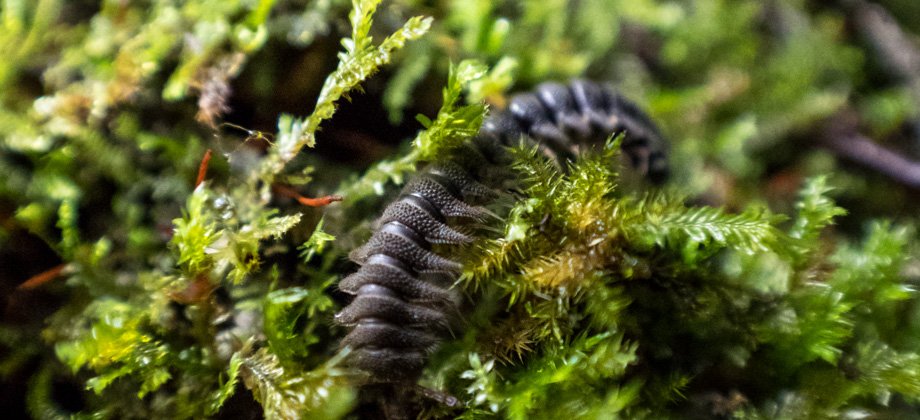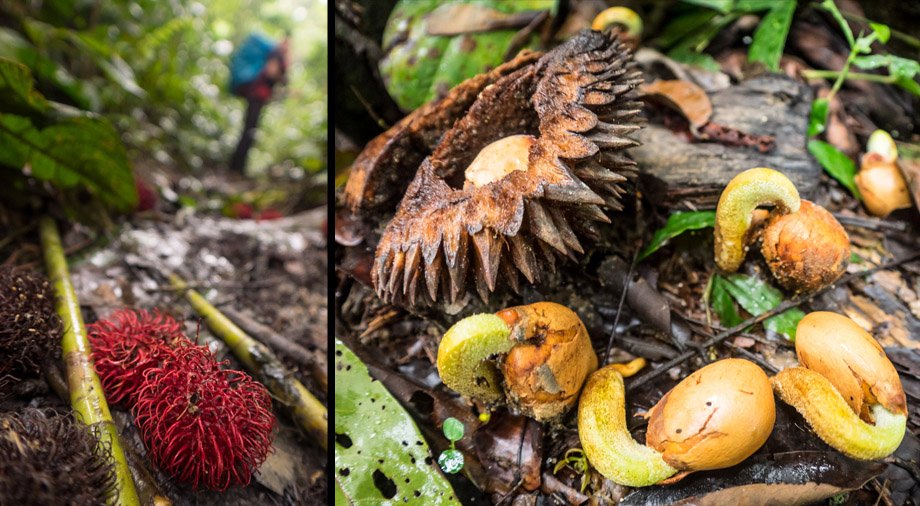GBB (CUS Connection) - Day 5
Millipedes

The Bongok Hill plateau where we had spent the previous night turned out to not be the summit of the hill. The actual summit lay more than a kilometre further up the trail, which took us another half an hour to climb up to. A ridge that made its way westward led to the summit, and as we were following it, I felt a sharp piercing sensation on my forearm. As I looked down, a large insect that looked like an Asian hornet
(Vespa velutina) flew away.
Just under a decade ago, I had been stung by a swarm of Asian giant hornets
(Vespa mandarinia) and was rushed to the hospital as a result, so I was fully aware of how potent their venom could be. Fortunately, there were no signs or symptoms that indicated the onset of an allergic reaction, but I had my epinephrine on stand-by and was closely monitoring my body for things like truncal hives or an itchy throat just in case.
I also discovered a tick
(Superfamily : Ixodoidea) embedded in my wrist just as were reached the summit of the hill. I took great care to remove the tick by grasping it as close to my skin as I could before carefully and slowly pulling it off. Ticks carry all manner of bacteria and viruses, and signs of an infection--or worse yet, a disease--can develop many hours after one has been bitten, so we placed it between some layers of folded paper and kept it aside just in case it was needed for identification later on. As we continued on, siamang gibbons
(Symphalangus syndactylus) hooted in the distance to our left, and their gleeful cheers spurred us on.
 Pill millipedes (Family : Zephroniidae)
Pill millipedes (Family : Zephroniidae)
Millipedes abounded here, and specimens were encountered from most of the orders under the Diplopoda class. These arthropods are detritivores, which means that they feed on dead plants. Their diet helps to 'recycle' the nutrients from the plants back into the forest floor at a rate that is much higher than if the plants were just left to decompose. As such, millipedes are often found under piles of dead leaves; the moisture content of which also appeals to them as millipedes lose body moisture through their exoskeleton at a fairly high rate. This is also why millipedes tend to be the most active after the sun has set or after it has just rained.
 A flat-backed millipede (Order : Polydesmida)
A flat-backed millipede (Order : Polydesmida)
We finally reached the 'USG Junction' at 11:40 (3.1 km mark). By then, the swelling on my forearm had yet to subside so we made the decision to withdraw from the range via the Pos Kemar escape route that was accessed from the left turning. Before we did that however, I had to inform the main guide Kay who, along with the others, had taken the right turning towards 'Lenweng Camp', which ultimately led to Mount Ulu Sepat (
elevation : 2161 m). I set down my backpack, grabbed my water supply and survival kit, and began to run slowly down the trail toward the others. The 2.5 km 'run' up to Lenweng Camp (since there was a 150 metres ascent) took me half an hour, but I also stayed a half hour there to both explain the situation to Kay as well as to go over the options with him. I then made my way back to 'USG Junction' once again.
 A round-backed millipede (Order: Spirobolida)
A round-backed millipede (Order: Spirobolida)
We then continued north-west from the junction after a quick lunch, and toward the Temiar settlement of Pos Kemar. Our destination was seven kilometres further up the trail through numerous river crossings, fields of bamboo, and plenty of Temiar fruit orchards. Despite the distance that still remained however, there was a renewed spring in our step as we knew that we would soon be free from the relentless rain and ubiquitous mud, and of course, the incessant swarms of the
hematophagous sandflies
(Subfamily : Phlebotominae).
We will definitely be back for CUS though!
 Rambutan (Nephelium lappaceum) and durian (Durio sp.) fruit from the orchards
Rambutan (Nephelium lappaceum) and durian (Durio sp.) fruit from the orchards
Suunto Movescount Stats

 Download GPX file here (right click and save link as)
Download GPX file here (right click and save link as)









